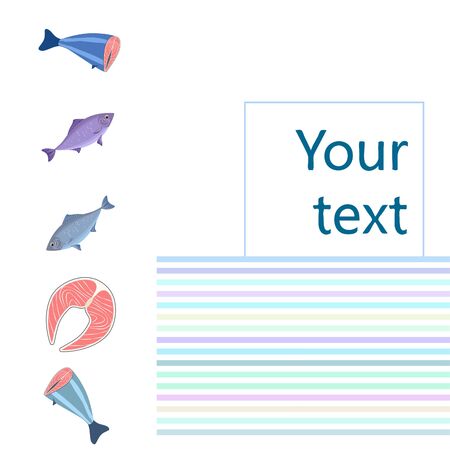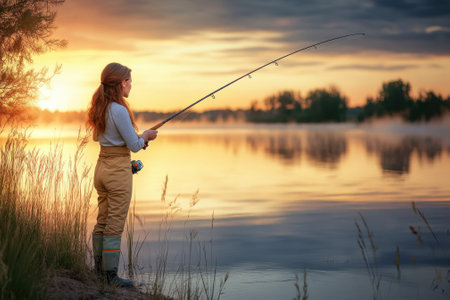1. Fishing Rod and Reel Combo
Choosing the right rod and reel combo is one of the most important steps when youre just getting started with fishing. For beginners, a medium-action spinning combo is the go-to choice. Its easy to use, forgiving for new anglers, and works well for catching a variety of freshwater fish found all across the United States—like bass, bluegill, crappie, and trout.
Why Choose a Spinning Combo?
Spinning combos are perfect for first-timers because they’re simple to cast and handle. Unlike baitcasting reels that require more skill to avoid line tangles (also known as “bird’s nests”), spinning reels allow you to focus more on learning how to fish rather than struggling with gear issues.
Benefits of a Medium-Action Spinning Combo:
| Feature | Benefit for Beginners |
|---|---|
| Medium Action | Offers a good balance between sensitivity and strength, making it easier to feel bites without snapping your line |
| Spinning Reel | User-friendly and great for casting lightweight lures or live bait |
| Versatility | Can be used in lakes, rivers, and ponds to catch multiple freshwater species |
| Affordability | Available in budget-friendly options that still offer quality performance |
Pro Tip:
Look for a combo that comes pre-spooled with fishing line. That way, you can head straight to the water without any extra setup.
If youre shopping at stores like Bass Pro Shops, Cabelas, or even Walmart, ask for help finding a “ready-to-fish” spinning combo. These kits often include everything you need to start fishing right away.
2. Tackle and Bait Essentials
When youre gearing up for your first fishing trip, having the right tackle and bait can make a big difference. Your tackle box doesn’t need to be fancy, but it should have the basics to help you catch fish and enjoy your time out on the water.
Basic Tackle You’ll Need
Think of your tackle box as your fishing toolbox. Here are some essentials every beginner should have:
| Item | Purpose |
|---|---|
| Hooks (various sizes) | To hold your bait and catch the fish |
| Sinkers (weights) | Help your bait sink to the right depth |
| Bobbers (floats) | Keep your bait suspended and signal bites |
| Artificial lures | Mimic small prey to attract fish |
Live Bait Options
Live bait is often the easiest way for beginners to start catching fish. It’s natural, effective, and widely available at bait shops or even in your backyard.
| Bait Type | Good For |
|---|---|
| Worms (nightcrawlers or red wigglers) | Panfish, bass, catfish |
| Minnows | Bass, crappie, walleye |
A good rule of thumb: if you’re not sure what to use, start with worms. They’re cheap, easy to handle, and work well for many freshwater species across the U.S.
Tackle Box Tips for Beginners
- Organize gear by type so it’s easy to find what you need.
- Add small tools like pliers and line cutters for convenience.
- Packing extra hooks and bobbers saves time if you lose a few.
Your tackle and bait setup doesn’t have to be complicated. Start with the basics, learn what works in your local waters, and build from there as you gain experience.

3. Fishing License and Local Regulations
Before casting your line, make sure you purchase the necessary fishing license for your state and familiarize yourself with local fishing regulations to avoid fines. In the U.S., fishing laws vary by state, and each state has its own rules about where you can fish, what species you can catch, size limits, and how many fish you’re allowed to keep. Having a valid fishing license isn’t just about following the law—it also helps support conservation efforts and ensures that future generations can enjoy fishing too.
Why You Need a Fishing License
A fishing license is required in most states whether youre fishing in freshwater or saltwater. The fees collected from licenses go directly toward fishery management, habitat protection, and educational programs. If you’re caught fishing without one, you could face hefty fines or even have your gear confiscated.
Where to Get Your License
You can usually purchase a fishing license online through your states fish and wildlife department website, at sporting goods stores like Bass Pro Shops or Cabela’s, or at local bait shops. Some states also offer short-term licenses if youre only planning to fish for a day or two.
Understanding Local Regulations
Every state has unique rules about:
- Fishing seasons: When certain species can be caught
- Bag limits: How many fish of a specific type you can keep per day
- Size limits: Minimum or maximum lengths of fish you’re allowed to harvest
- Bait restrictions: Some areas don’t allow live bait or have restrictions on types of lures
- Protected areas: Certain lakes, rivers, or coastal zones may be off-limits or catch-and-release only
Example: State-by-State Fishing License Overview
| State | Resident License Cost (Annual) | Non-Resident License Cost (Annual) | Online Purchase Link |
|---|---|---|---|
| California | $61.82 | $166.89 | wildlife.ca.gov |
| Florida | $17.00 | $47.00 | myfwc.com |
| Texas | $30.00 | $58.00 | tpwd.texas.gov |
If youre unsure about the rules in your area, check with your states Department of Fish & Wildlife or ask someone at your local tackle shop—theyre usually happy to help first-timers get started on the right foot.
4. Protective Clothing and Gear
When youre heading out on your first fishing trip, what you wear can make or break your experience. Dressing for the weather and the environment is key to staying comfortable and focused while waiting for that big catch. Whether youre fishing off a dock, along a riverbank, or near a lake, protective clothing and gear can help you enjoy your day without unnecessary discomfort.
Stay Comfortable with the Right Essentials
Here’s a quick breakdown of must-have items to keep you protected during your fishing adventure:
| Item | Why It’s Important |
|---|---|
| Hat | Shields your face from the sun and helps reduce glare while spotting fish. |
| Polarized Sunglasses | Cuts through water glare so you can see beneath the surface; protects eyes from UV rays. |
| Sunscreen (SPF 30+) | Prevents painful sunburns during long hours in the sun. |
| Bug Spray | Keeps mosquitoes and other pests away, especially near water. |
| Water-Friendly Shoes | Provides traction on slippery surfaces and keeps feet dry and comfortable. |
Dress in Layers
If youre going fishing early in the morning or during cooler months, wearing layers lets you adjust as the temperature changes. A light waterproof jacket can be useful if rain is in the forecast.
Choose Quick-Dry Materials
Clothing made from moisture-wicking or quick-dry fabric will keep you more comfortable if you get splashed or caught in light rain. Avoid heavy cotton, which stays wet and gets cold fast.
Bonus Tip:
A small towel or microfiber cloth can come in handy for wiping hands after handling bait or fish. Keep one clipped to your belt loop or tackle bag for easy access.
With the right protective clothing and gear, youll be ready to enjoy your first fishing trip comfortably and safely—no matter what nature throws your way.
5. Tackle Box and Storage Solutions
A durable tackle box keeps your gear organized and accessible, which is especially important when youre just starting out on your fishing journey. Instead of digging through a messy pile of hooks, lures, and tools, having everything in its place makes your trip smoother and more enjoyable.
Why You Need a Tackle Box
Tackle boxes are designed to help you store and transport all the small but essential items youll need for fishing. From different types of hooks to various lures and pliers, these boxes make sure nothing gets lost or tangled.
Features to Look For
When shopping for your first tackle box, consider the following features:
| Feature | Why It Matters |
|---|---|
| Multiple Compartments | Keeps lures, hooks, weights, and tools separated for easy access. |
| Durable Material | Ensures the box can handle outdoor conditions like rain or rough terrain. |
| Portability | Look for a handle or shoulder strap so its easy to carry to your fishing spot. |
| Transparent Lids | Makes it easy to see what’s inside without opening every compartment. |
| Customizable Trays | Allows you to adjust compartments based on your gear size and type. |
Tackle Storage Alternatives
If a traditional tackle box feels bulky, there are other storage options worth considering:
- Tackle Bags: Soft-sided with multiple pockets; easier to carry and often come with built-in trays.
- Pocket Organizers: Great for minimalist anglers who only bring the basics.
- Utility Boxes: Stackable plastic containers that fit into larger bags or backpacks.
Quick Tip:
Label each compartment or tray so you can find what you need fast — especially helpful when fish are biting and time matters!
6. Tools for Safety and Success
When youre heading out on your first fishing trip, having the right tools can make all the difference between a fun day and a frustrating one. Besides your rod and reel, there are a few essential items that help you stay safe and handle any situation that might pop up on the water.
Must-Have Fishing Tools
These tools are small but mighty—each one serves a specific purpose that can save time, avoid injury, or make your experience more enjoyable.
| Tool | Purpose |
|---|---|
| Needle-Nose Pliers | Used to safely remove hooks from fish or even yourself if needed. |
| Fishing Line Cutter | Makes it easy to trim excess line or cut tangled knots quickly. |
| Measuring Tape | Helps you measure your catch to ensure it meets local size regulations. |
| Small First Aid Kit | Essential for treating minor cuts, scrapes, or insect bites while outdoors. |
Why These Tools Matter
You never know what could happen when youre out fishing—hooks can get stuck, lines can break, and sometimes accidents just happen. Having these basic tools on hand gives you confidence and keeps your focus where it should be: enjoying your time by the water.
Pro Tip:
Keep your tools in a small tackle box or pouch so they’re easy to reach when you need them. Some pliers even come with belt clips for quick access!


